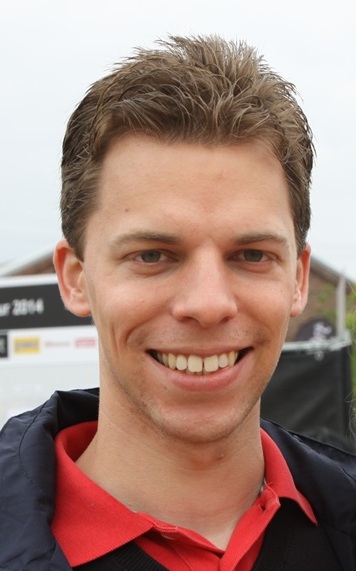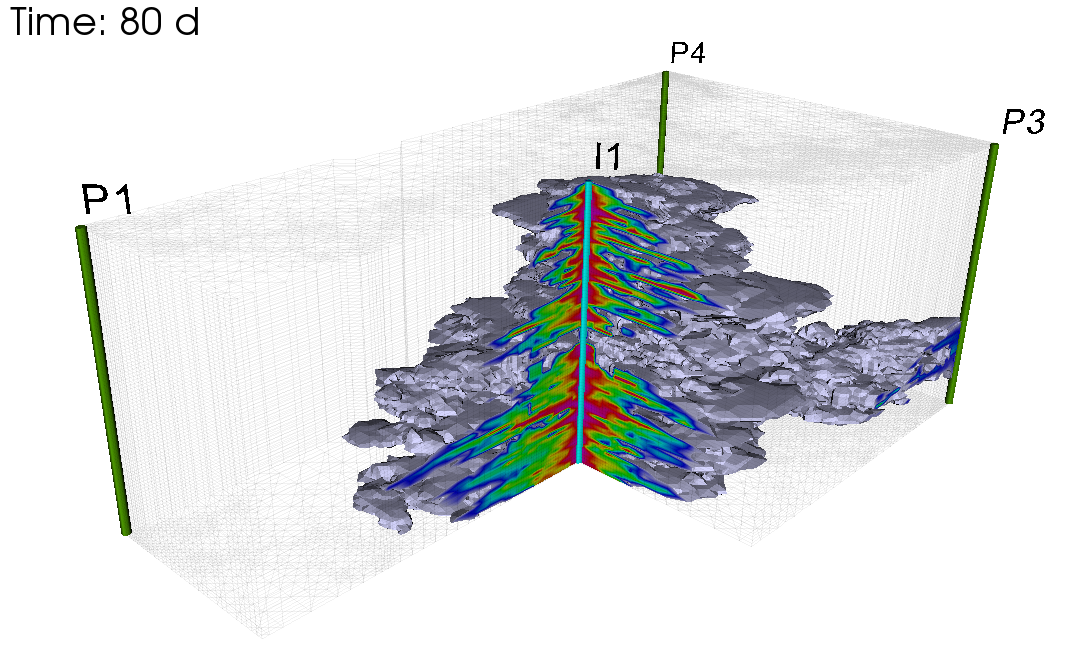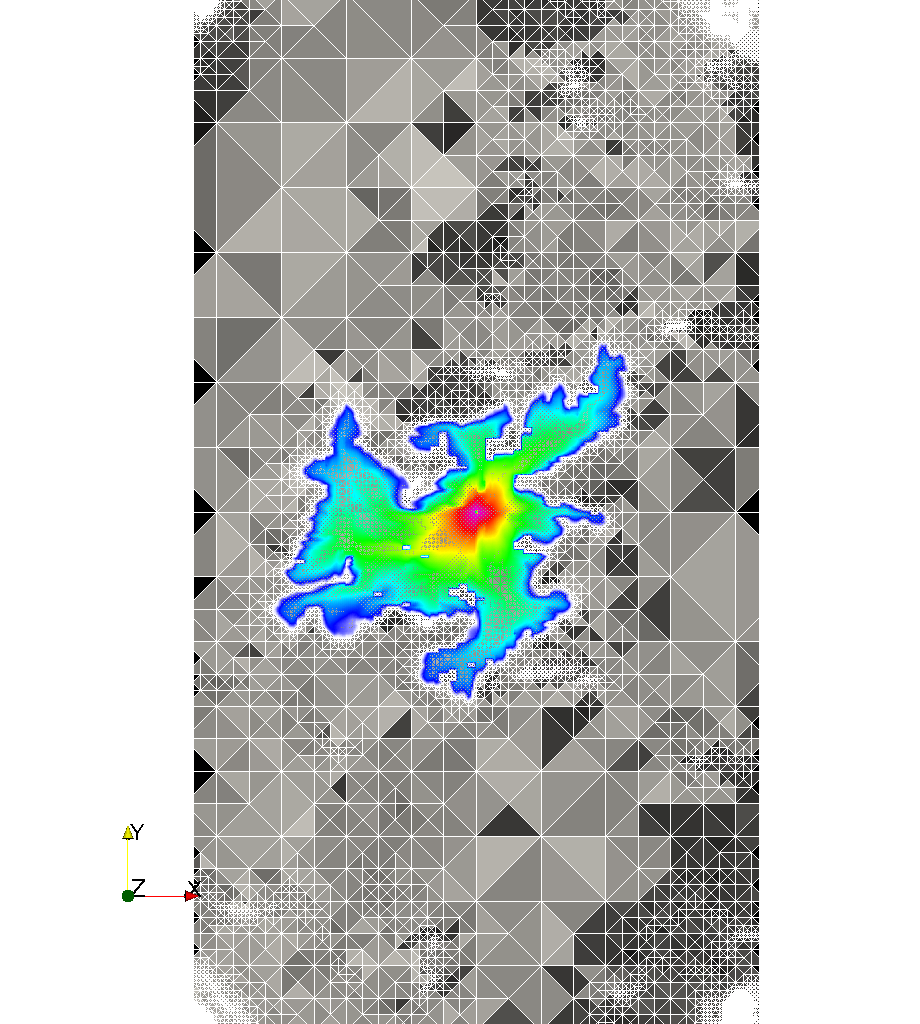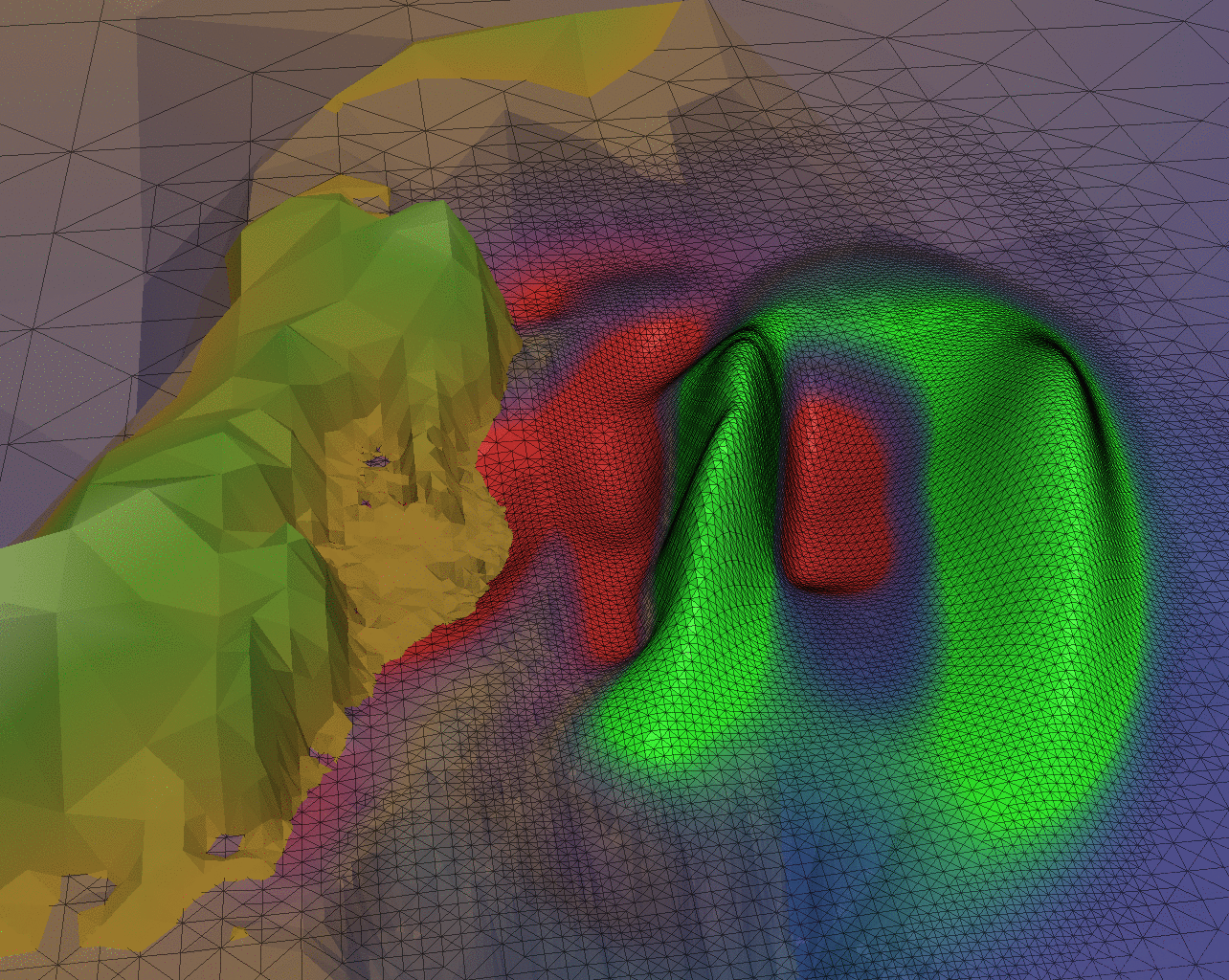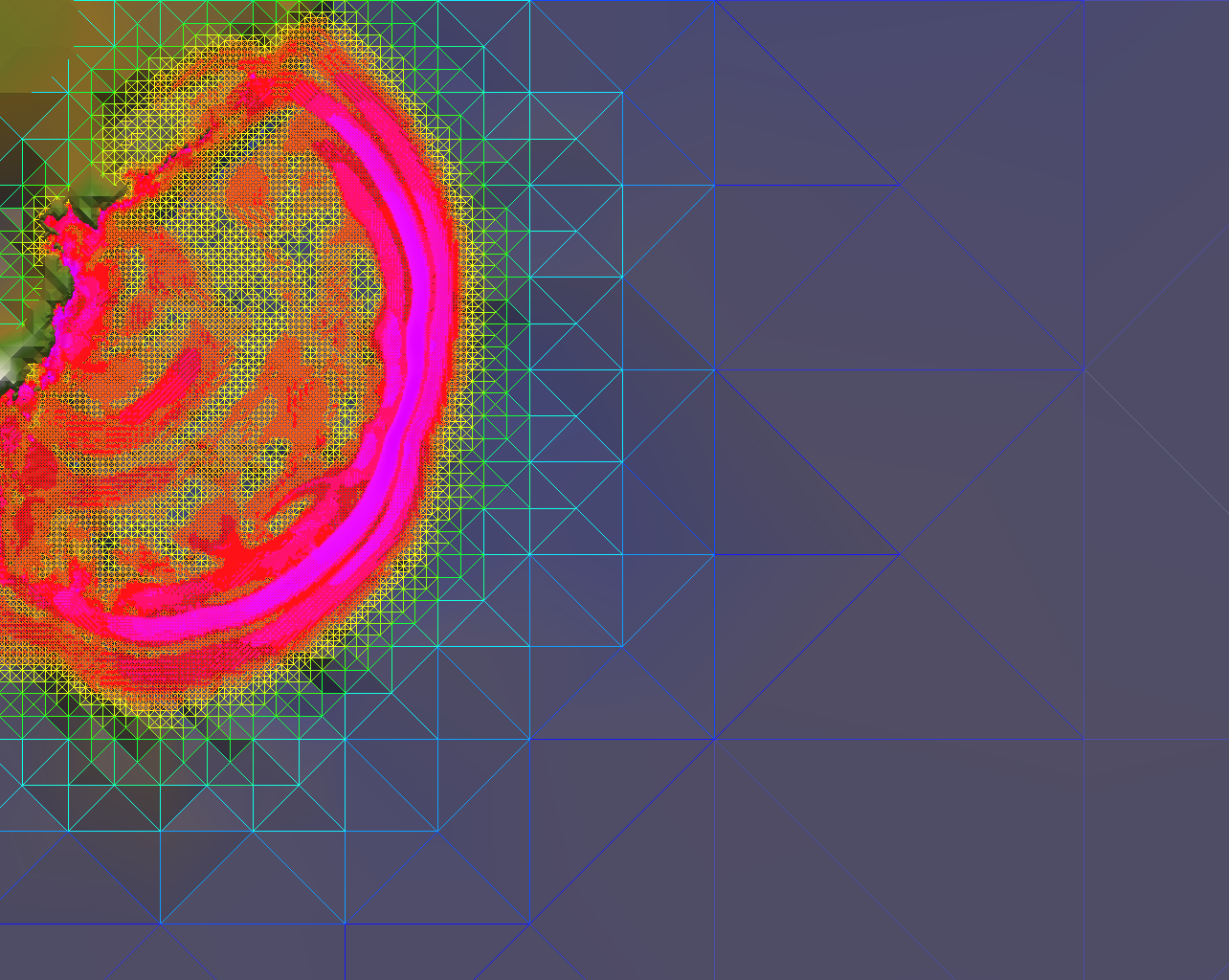Dr. rer. nat. Oliver Meister: Difference between revisions
(Created page with '; '''Address:''' : TU München : Institut für Informatik : 85748 Garching b. München ; '''Office:''' : LRZ E.2.040 ; '''Email:''' : tba ; '''Phone:''' : (089) 35831 - 7812 ; ''…') |
No edit summary |
||
| (77 intermediate revisions by 2 users not shown) | |||
| Line 1: | Line 1: | ||
; '''Address:''' | {| class="wikitable float-right" | ||
: TU München | | [[Image:Meister.jpg|x320px]] | ||
: Institut für Informatik | | | ||
: 85748 Garching b. München | ;'''Address:''' | ||
; '''Office:''' | : TU München | ||
: | : Institut für Informatik | ||
; '''Email:''' | : Boltzmannstr. 3 | ||
: | : 85748 Garching b. München | ||
; '''Phone:''' | ;'''Office:''' | ||
: (089) 35831 - 7812 | : Leibniz Supercomputing Centre | ||
; '''Office | : Boltzmannstr. 1 | ||
: by arrangement | : E.2.040 | ||
;'''Email:''' | |||
: http://www5.in.tum.de/pic/persons_email_pics/Meisteromail.png | |||
;'''Phone:''' | |||
: (089) 35831-7812 | |||
;'''Office hours:''' | |||
: by arrangement | |||
|} | |||
=About me= | |||
In May 2010, after I received my Diploma degree in Informatics at the Technische Universität München (TUM), I started working as a PhD student of [[Univ.-Prof. Dr. Michael Bader]], who had a position as a Junior Professor (JP) in the [https://www.ipvs.uni-stuttgart.de/abteilungen/sgs SGS] group at the IPVS, Universität Stuttgart. The group was led by [http://schweitzer.ins.uni-bonn.de/people/schweitzer/ Prof. Dr. Marc-Alexander Schweitzer] at the time. Shorty afterwards, Michael Bader accepted a position as Univ.-Prof. at TUM. So I moved back to Munich in November 2011 to continue working as a member of the SCCS chair under [[Univ.-Prof. Dr. Hans-Joachim Bungartz]], where I finished my PhD in 2016. Since August 2016 I have been employed in a private company. | |||
My topics of interest include High Performance Computing (HPC) for applications such as multi-phase flow in porous media and tsunami simulation, dynamically adaptive grids, parallelization of structured meshes and load balancing with space-filling curves. | |||
=Research= | |||
During my PhD, I developed the software project [https://github.com/meistero/samoa sam(oa)²], a framework for efficient, numerical solution of partial differential equations on HPC architectures based on space-filling curve traversal. Two applications were implemented: two-phase porous media flow and tsunami wave propagation. | |||
== Two-Phase Porous Media Flow == | |||
This is a dynamically adaptive, parallel simulation of the [http://www.spe.org/web/csp/datasets/set02.htm SPE10] benchmark, where the vertical axis has been scaled by a factor 5 for better visibility. Colors indicate the water saturation (blue = 0.2, pink = 1.0), the lower right corner has been clipped. A central well (I1) injects water into the domain and wells (P1, P2, P3, P4) at the four corners produce oil. | |||
[[File:SPE10.png|500px|link=http://www5.in.tum.de/persons/meistero/SPE10.avi]] | |||
Below is a simulation of slice 0 of SPE10. The left video shows the log-scaled permeability (black to gray) and water saturation (blue = 0.2, pink = 1.0). The right video shows adaptive refinement and coarsening of the grid and the domain decomposition due to load balancing, marked by distinct colors. | |||
[[File:SPE10_single_slice.0130.png|350px|link=http://www5.in.tum.de/persons/meistero/SPE10_single_slice.avi]] | |||
[[File:SPE10_single_slice_geometry.0130.png|350px|link=http://www5.in.tum.de/persons/meistero/SPE10_single_slice_geometry.avi]] | |||
== Tsunami Wave Propagation == | |||
This is a dynamically adaptive, parallel simulation of the [http://www.ngdc.noaa.gov/hazard/11mar2011.html Tohoku tsunami 2011]. The left video shows the Japanese coast line with exaggerated tsunami wave fronts (green: positive elevation, red: negative elevation). The right video shows a top view of the scenario, with focus on adaptive refinement and coarsening of the grid. | |||
[[File:tohoku_side.0016.png|500px|link=http://www5.in.tum.de/persons/meistero/tohoku_side.avi]] | |||
[[File:tohoku_top.0016.png|500px|link=http://www5.in.tum.de/persons/meistero/tohoku_top.avi]] | |||
=Publications and Presentations= | |||
Below you can find a selection of published work and talks. | |||
==Publications== | |||
<pubsccs>nocaption&noheader=1&utypid=1010&utypid=1020&utypid=2040&&utypid=2030&authorid=86&nocaption=1</pubsccs> | |||
==Posters== | |||
<pubsccs>nocaption&noheader=1&authorid=86&utypid=1130&nocaption=1</pubsccs> | |||
==Talks== | |||
<pubsccs>nocaption&noheader=1&authorid=86&utypid=1120&nocaption=1</pubsccs> | |||
=Student Theses= | |||
I do not work for the chair anymore, but if you are interested in a topic for a student project/thesis, then contact me and I will forward your request to the appropriate person. | |||
Open topics include: | |||
* Efficient neighbour search in a parallel, adaptive framework | |||
* Preprocessing permeability tensors for upscaling in porous media flow | |||
* Tuning a parallel tsunami simulation on adaptive grids | |||
More topics are available on request. | |||
==Finished Theses== | |||
<pubsccs>noheader=1&betreuerid=86&nocaption=1</pubsccs> | |||
=Research Stays= | |||
* Aug - Sep 2013: Imperial College London under supervision of [http://www.imperial.ac.uk/people/david.ham Dr. David Ham] at the [https://spo.doc.ic.ac.uk/twiki/bin/view.cgi/External Software Performance Optimisation Group] of [http://www.doc.ic.ac.uk/~phjk/ Prof. Paul Kelly] | |||
=Teaching= | |||
==Lab Courses== | |||
* ST 13, ST 14, ST 15: [http://www5.in.tum.de/wiki/index.php/Bachelor-Praktikum:_Game_Physics_-_Summer_15 Game Physics] | |||
==Seminars== | |||
* ST 12, ST 13, ST 14, ST 15: [http://www5.in.tum.de/wiki/index.php/Numerical_Methods_for_Earthquake_and_Tsunami_Simulation_-_Summer_15 Numerical Methods for Earthquake and Tsunami Simulation] | |||
* ST 12: [http://www5.in.tum.de/wiki/index.php/BGCE_Seminar_Leading_Yourself_and_Others Leading Yourself and Others] | |||
* ST 11: [http://www.ferienakademie.de/2011/K4/K4.html Ferienakademie] | |||
==Tutorials== | |||
* WT 12/13, WT 13/14, WT 14/15: [http://www5.in.tum.de/wiki/index.php/HPC_-_Algorithms_and_Applications_-_Winter_14 HPC Algorithms and Applications] | |||
* WT 11/12: [http://www5.in.tum.de/wiki/index.php/Diskrete_Strukturen_-_Winter_15 Diskrete Strukturen] | |||
Latest revision as of 19:59, 8 February 2017
About me
In May 2010, after I received my Diploma degree in Informatics at the Technische Universität München (TUM), I started working as a PhD student of Univ.-Prof. Dr. Michael Bader, who had a position as a Junior Professor (JP) in the SGS group at the IPVS, Universität Stuttgart. The group was led by Prof. Dr. Marc-Alexander Schweitzer at the time. Shorty afterwards, Michael Bader accepted a position as Univ.-Prof. at TUM. So I moved back to Munich in November 2011 to continue working as a member of the SCCS chair under Univ.-Prof. Dr. Hans-Joachim Bungartz, where I finished my PhD in 2016. Since August 2016 I have been employed in a private company.
My topics of interest include High Performance Computing (HPC) for applications such as multi-phase flow in porous media and tsunami simulation, dynamically adaptive grids, parallelization of structured meshes and load balancing with space-filling curves.
Research
During my PhD, I developed the software project sam(oa)², a framework for efficient, numerical solution of partial differential equations on HPC architectures based on space-filling curve traversal. Two applications were implemented: two-phase porous media flow and tsunami wave propagation.
Two-Phase Porous Media Flow
This is a dynamically adaptive, parallel simulation of the SPE10 benchmark, where the vertical axis has been scaled by a factor 5 for better visibility. Colors indicate the water saturation (blue = 0.2, pink = 1.0), the lower right corner has been clipped. A central well (I1) injects water into the domain and wells (P1, P2, P3, P4) at the four corners produce oil.
Below is a simulation of slice 0 of SPE10. The left video shows the log-scaled permeability (black to gray) and water saturation (blue = 0.2, pink = 1.0). The right video shows adaptive refinement and coarsening of the grid and the domain decomposition due to load balancing, marked by distinct colors.
Tsunami Wave Propagation
This is a dynamically adaptive, parallel simulation of the Tohoku tsunami 2011. The left video shows the Japanese coast line with exaggerated tsunami wave fronts (green: positive elevation, red: negative elevation). The right video shows a top view of the scenario, with focus on adaptive refinement and coarsening of the grid.
Publications and Presentations
Below you can find a selection of published work and talks.
Publications
<pubsccs>nocaption&noheader=1&utypid=1010&utypid=1020&utypid=2040&&utypid=2030&authorid=86&nocaption=1</pubsccs>
Posters
<pubsccs>nocaption&noheader=1&authorid=86&utypid=1130&nocaption=1</pubsccs>
Talks
<pubsccs>nocaption&noheader=1&authorid=86&utypid=1120&nocaption=1</pubsccs>
Student Theses
I do not work for the chair anymore, but if you are interested in a topic for a student project/thesis, then contact me and I will forward your request to the appropriate person. Open topics include:
- Efficient neighbour search in a parallel, adaptive framework
- Preprocessing permeability tensors for upscaling in porous media flow
- Tuning a parallel tsunami simulation on adaptive grids
More topics are available on request.
Finished Theses
<pubsccs>noheader=1&betreuerid=86&nocaption=1</pubsccs>
Research Stays
- Aug - Sep 2013: Imperial College London under supervision of Dr. David Ham at the Software Performance Optimisation Group of Prof. Paul Kelly
Teaching
Lab Courses
- ST 13, ST 14, ST 15: Game Physics
Seminars
- ST 12, ST 13, ST 14, ST 15: Numerical Methods for Earthquake and Tsunami Simulation
- ST 12: Leading Yourself and Others
- ST 11: Ferienakademie
Tutorials
- WT 12/13, WT 13/14, WT 14/15: HPC Algorithms and Applications
- WT 11/12: Diskrete Strukturen
